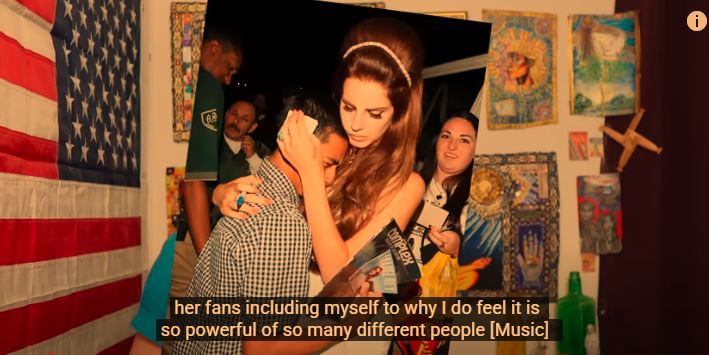Lana Del Rey, born Elizabeth Woolridge Grant on June 21, 1985, in New York City, is a name that evokes nostalgia, sadness, and beauty, all wrapped up in a hauntingly cinematic package. But behind this enigmatic persona is a woman who has fought tooth and nail to define her career and her identity. Del Rey’s rise to fame wasn’t quick or easy. It wasn’t a result of a catchy viral trend or a stroke of overnight luck. Her journey was shaped by perseverance, reinvention, and an unwavering commitment to authenticity in an industry often obsessed with the superficial.
Growing up in Lake Placid, New York, Del Rey was far from the glamorous life she would one day lead. Raised in a family that moved away from New York’s fast-paced lifestyle, her childhood wasn’t filled with the luxuries that would later come to define her public image. Instead, it was marked by personal struggles that included substance abuse. But rather than shying away from these experiences, Del Rey has used them as fuel for her artistic fire.
She left the small town life behind at 18, choosing not to attend college immediately but instead living with her aunt and uncle on Long Island. It was here that she picked up a guitar and began crafting the sounds that would one day capture the world’s attention. It was a time for introspection and artistic development, and Del Rey poured her heart into her music. Though she was far from the spotlight at this point, the seeds for her future stardom were being planted.
By 2006, Del Rey, still known as Lizzy Grant, was performing in small clubs and open-mic nights, trying to make a name for herself. Her early music didn’t gain much attention, but it was during this period that she started developing her distinct sound—one that would later be called “Hollywood Sadcore.” Incredibly versatile, her music fused classic Americana with dark, melancholic themes, creating an entirely new sound that would later define her career.
Reinventing Herself: The Birth of Lana Del Rey
Her breakthrough came in 2011, but not in the way most people might expect. After several years of struggling to break through, Del Rey reinvented herself, adopting the stage name “Lana Del Rey.” The name was born out of a trip to Miami, where she wanted something that evoked both glamour and nostalgia. “Lana Del Rey just sounded good coming out of my mouth,” she later said, “It was exotic sounding, and I like exotic places and I like really gorgeous things.”
Her self-produced music video for Video Games went viral, quickly gaining attention for its vintage aesthetic and haunting beauty. The video, which she shot herself, captured a melancholy world filled with Hollywood imagery, home video footage, and the kind of bittersweetness that would come to define her entire career. At the time, Del Rey was an unknown artist in the mainstream, but that quickly changed. With Video Games, she didn’t just make a song—she created an atmosphere, a mood, a whole cinematic universe.
By combining haunting melodies with stunning visuals, Del Rey carved out a niche that was unlike anything else in popular music at the time. She drew comparisons to old Hollywood icons, but she added her own twist—blending nostalgia with modern pain. Critics may have been skeptical, and her debut performance on Saturday Night Live in 2012 was met with harsh criticism, but fans weren’t fazed. The passion that poured through her music resonated deeply with them, and they rallied behind her.
From Obscurity to Stardom: The Success of Born to Die
In 2012, Del Rey’s album Born to Die was released, cementing her place in the music world. The album’s lush production and emotionally charged lyrics made it an instant success. Tracks like Summertime Sadness and Born to Die topped charts and captivated listeners. Yet, the album was met with mixed reviews—some critics loved the cinematic scope, while others dismissed it as a shallow attempt at creating a “larger-than-life” persona.
For Del Rey, the criticism didn’t deter her; it fueled her. Instead of backing down, she embraced it, using it as a way to further her own personal growth as an artist. “I think in one week, The New Yorker, The New York Times, The New York Post, and New York magazine agreed that it was the most ridiculous act that had ever come out,” she shared in a 2023 interview. But instead of being crushed, she found strength in the backlash, allowing her music to evolve with each album.
By the end of 2012, Born to Die had not only climbed the Billboard charts but had also established Del Rey as one of the most innovative and polarizing figures in the music industry. Her ability to blend vulnerability with grandeur was remarkable, setting her apart from other pop artists who relied on glossy, cookie-cutter formulas. Del Rey’s music wasn’t just something you listened to—it was something you experienced, a narrative that pulled you into her world.
Continued Evolution: Norman F––g Rockwell and Beyond
As the years went on, Del Rey’s sound continued to evolve. Albums like Ultraviolence (2014) and Honeymoon (2015) saw her explore darker themes and more stripped-back production, showcasing a more refined version of the artist she had become. But it was 2019’s Norman F––g Rockwell that marked a significant turning point in her career.

Norman F––g Rockwell wasn’t just a critical success—it was hailed as one of the best albums of the decade. With this album, Del Rey showed an incredibly mature, self-aware side. She tackled themes of love, disillusionment, and societal decay with the same melancholic beauty that had defined her earlier work but with a more polished, introspective sound. It was undeniably clear that Lana Del Rey had found her voice—not just as a pop star, but as an artist with something deeper to say.
Her ability to navigate through public scrutiny while maintaining an authentic voice made her an even more compelling figure. In an industry often dominated by trends, Del Rey stayed true to her vision, refusing to follow the cookie-cutter path laid out for her. Whether it was her spoken-word poetry in Violet Bent Backwards Over the Grass (2020) or her continued ability to make songs that felt deeply personal yet universally relatable, Del Rey’s evolution as an artist was incredibly impressive.
The Power of Nostalgia: Crafting a Timeless Legacy
What makes Lana Del Rey stand out in the crowded pop landscape is her ability to create a sense of nostalgia that feels both modern and timeless. She combines American iconography—such as the imagery of the California coast and vintage cars—with themes of love, loss, and heartbreak. This fusion of the past and present gives her music a quality that transcends time, making it appeal to both older generations and younger listeners.
By embracing both the glamour of the past and the struggles of the present, Del Rey has created a sound that is unmistakably her own. Her music evokes a sense of longing for a time that never truly existed, capturing both the pain and beauty of the human experience. This blend of nostalgia and melancholy has made her one of the most original voices in pop music, able to stand toe-to-toe with other icons while maintaining her own unique identity.
Her music isn’t just about the sound—it’s about creating a world, an atmosphere. With each new album, she invites listeners to step into her universe, to feel what she feels, and to experience the highs and lows of life alongside her. In a world where pop music often feels disposable, Del Rey’s ability to create timeless art sets her apart.
Looking Ahead: The Future of Lana Del Rey
As we look to the future, Lana Del Rey’s journey is far from over. With her upcoming album Lasso, expected to drop in September 2024, fans can only imagine what new territories she’ll explore. As her sound continues to evolve, one thing remains certain: she will continue to push boundaries and stay true to herself. Her ability to reinvent her music without sacrificing her authenticity has set her up for continued success in the ever-changing music industry.
Her story is a powerful reminder that the road to success isn’t always linear. Lana Del Rey’s journey—from obscurity to stardom, from criticism to acclaim—has been defined by her refusal to conform. By embracing her unique vision, she has carved out a space in music that will resonate for generations to come. Lana Del Rey has proven that being true to yourself, even in the face of adversity, is the ultimate path to success. And as she continues to evolve and create, her influence on music and pop culture will only grow stronger.
